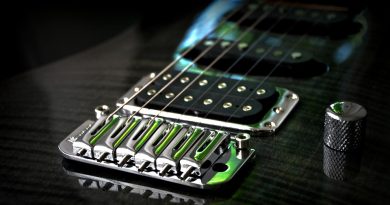Master the Art of Guitar Pull-Offs with These Expert Tips
Master the Art of Guitar Pull-Offs with These Expert Tips
As a guitarist, mastering the technique of pull-offs is essential for creating smooth and expressive transitions between notes. Pull-offs can add depth and complexity to your playing, allowing you to create melodic runs and intricate solos. In this article, we will provide you with expert tips on how to perfect the art of guitar pull-offs.
Understanding the Basics of Pull-offs
Before we dive into the tips for mastering pull-offs, it is important to understand the basic concept of this technique. A pull-off is a guitar playing technique where a guitarist plays a note on a higher fret and then “pulls off” their finger to sound a lower note on the same string. This creates a smooth and seamless transition between the two notes.
To execute a pull-off, start by fretting a note on a higher fret with one of your fingers. Then, use another finger (usually the one right behind the fretting finger) to quickly pull off the string while maintaining pressure to produce the lower note. The key to a successful pull-off is to make sure that the string rings out clearly and that there is no unwanted noise or buzzing.
Tips for Mastering Guitar Pull-offs
Now that you have a basic understanding of pull-offs, let’s explore some expert tips to help you master this technique:
1. Focus on Finger Strength and Dexterity
One of the most important aspects of executing a pull-off accurately is having strong and agile fingers. To improve your finger strength and dexterity, incorporate exercises such as trills, hammer-ons, and pull-offs into your daily practice routine. Additionally, using a finger exerciser or grip strengthener can help build the necessary strength to perform pull-offs effortlessly.
2. Practice Slowly and Gradually Increase Speed
When starting to work on your pull-offs, it is crucial to practice slowly and focus on precision and clarity. Begin by playing a simple pull-off exercise at a comfortable tempo and gradually increase the speed as you become more proficient. Pay attention to the timing and coordination between your fretting and pulling-off fingers to ensure a smooth transition between notes.
3. Use Proper Technique
Proper technique is essential when it comes to executing clean and articulate pull-offs. To ensure that your pull-offs sound clear and musical, pay attention to the following key aspects of technique:
– Maintain a firm and consistent grip on the string with your fretting finger to produce a strong initial note.
– Use your pulling-off finger to quickly and decisively lift off the string, ensuring that the lower note rings out clearly.
– Practice muting the string with your picking hand to eliminate unwanted noise or string ringing.
4. Experiment with Different Finger Combinations
To expand your pull-off repertoire, experiment with different finger combinations and sequences. Practice pull-offs using various finger pairs, such as index-middle, middle-ring, and ring-pinky, to develop versatility in your playing. By exploring different finger combinations, you can create unique and compelling melodic patterns and licks.
5. Incorporate Pull-offs into Scale Exercises
Integrating pull-offs into your scale exercises is a great way to improve your technique and enhance your improvisational skills. Start by practicing simple scale patterns with pull-offs on different strings and frets to familiarize yourself with the technique. As you become more comfortable, experiment with incorporating pull-offs into more complex scale sequences and arpeggios to enhance your phrasing and musicality.
6. Listen to and Learn from Guitar Masters
Listening to and studying the playing styles of guitar masters can provide valuable insights and inspiration for mastering pull-offs. Take the time to analyze and emulate the techniques of renowned guitarists who excel in using pull-offs, such as Jimi Hendrix, Eric Clapton, and Eddie Van Halen. By studying their playing and incorporating elements of their style into your own practice routine, you can elevate your pull-off technique to a higher level.
Conclusion
Mastering the art of guitar pull-offs requires dedicated practice, patience, and attention to detail. By following the expert tips outlined in this article and incorporating pull-offs into your daily practice routine, you can enhance your playing skills and create dynamic and expressive musical performances. Remember to focus on finger strength and dexterity, practice slowly and gradually increase speed, use proper technique, experiment with different finger combinations, incorporate pull-offs into scale exercises, and listen to and learn from guitar masters. With perseverance and determination, you can become a proficient and versatile guitarist who can effortlessly execute captivating pull-offs.






